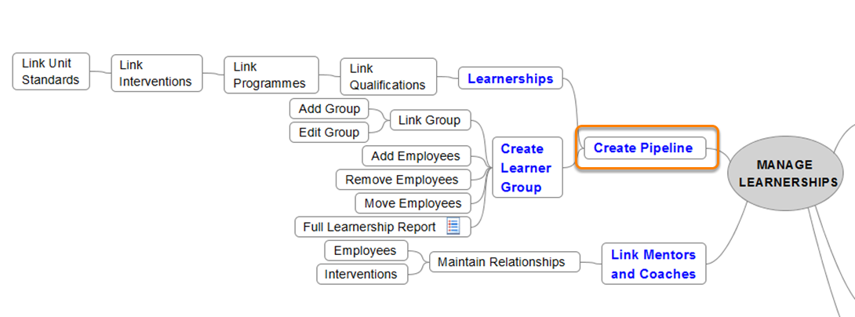How an LMS Learnership Can Transform Your Labor Force and Organization
How an LMS Learnership Can Transform Your Labor Force and Organization
Blog Article
Browsing the Globe of LMS Learnership: Strategies to Enhance Staff Member Training
In today's rapidly evolving corporate landscape, the efficient training and development of staff members are crucial elements for organizational success. Leveraging Knowing Administration Solution (LMS) for learnership programs has come to be a cornerstone in improving employee capabilities. Nevertheless, with the myriad of options and techniques offered, browsing this realm can be both complicated and discouraging for organizations. Just how can companies properly use LMS learnerships to optimize employee training and growth? By checking out the nuanced strategies and finest methods in this domain, companies can ensure that their training initiatives not just resonate with workers yet also drive substantial outcomes in terms of efficiency and development.

Recognizing LMS Learnership Benefits
Discovering the advantages of LMS learnership supplies a comprehensive understanding of the benefits it provides for staff member training. One key advantage of using a Knowing Management System (LMS) for employee training is the flexibility it provides. Staff members can access training materials at their benefit, allowing them to stabilize discovering with their day-to-day job duties. This versatility is especially valuable for remote or geographically spread groups who may not have accessibility to typical training approaches.
In addition, LMS learnerships offer a personalized understanding experience. Via functions such as flexible knowing paths and tailored material referrals, employees can concentrate on areas where they need renovation, optimizing the performance of the training program. This tailored method results in higher involvement degrees and much better retention of information.
Furthermore, LMS learnerships facilitate tracking and assessment of worker development. Employers can easily check participation, quiz scores, and completion prices, enabling them to recognize areas of strength and locations requiring improvement. This data-driven approach permits for targeted treatments and makes certain that training efforts straighten with organizational objectives.
Executing Interactive Training Modules
Building upon the personalized learning experience and data-driven technique offered by LMS learnerships, the assimilation of interactive training components improves staff member engagement and knowledge retention. Interactive training modules use a dynamic learning setting that actively includes workers in the training process. By integrating components such as gamification, simulations, quizzes, and branching situations, employees are urged to connect with the content, causing enhanced retention of details.

Personalizing Understanding Paths for Staff Members
Tailoring individualized learning paths for employees within LMS learnerships makes certain targeted ability growth and knowledge procurement in alignment with their expert growth purposes. lms learnership. By personalizing finding out paths, organizations can deal with the specific needs and preferences of each staff member, optimizing the performance of the training program. This tailored approach permits workers to concentrate on locations where they require enhancement, inevitably leading to a much more reliable and impactful knowing experience
Customization of discovering paths likewise fosters a sense of possession and motivation amongst workers. When people feel that their training is personalized to their requirements, they are much more likely to be engaged and committed to the discovering process. In addition, tailored learning courses can aid staff members see a clear connection in between their training and their occupation innovation, boosting their morale and job contentment.
To efficiently customize learning paths, companies can make use of data analytics and staff member responses to recognize private staminas, weaknesses, and finding out preferences. Leveraging this information, LMS systems can recommend certain training courses, modules, or resources that are most relevant to every worker's advancement objectives. By incorporating personalization into LMS learnerships, organizations can enhance staff member training end results and foster continual professional growth.
Tracking and Analyzing Educating Progression
In order to make certain the efficiency of individualized discovering paths within LMS learnerships, tracking and assessing training development comes to be necessary for organizations seeking to maximize worker advancement efforts. By keeping track of the development of specific workers, organizations can identify staminas and locations check these guys out that need enhancement, permitting targeted interventions to boost general efficiency - lms learnership. Through the usage of Learning Monitoring Solution (LMS), organizations can gather information on conclusion rates, evaluation scores, and time invested in different modules. This data gives important understandings into the efficiency of the training programs and helps in determining fads or patterns that may require adjustments.
Examining training progress also enables organizations to gauge the roi (ROI) of their worker development campaigns. By tracking essential performance indications such as ability acquisition, knowledge retention, and application in the work environment, organizations can examine the impact of training on staff member performance and organizational goals. This data-driven approach not only assists in assessing the efficiency of training programs yet also in making educated decisions on future understanding more tips here interventions and resource allotments.
Making Sure Continual Worker Interaction

Motivating open discussion and developing an encouraging learning environment can help staff members really feel valued and encouraged to actively get involved in training tasks. Eventually, by prioritizing continual worker involvement, companies can improve the total efficiency of their training programs and drive much better understanding results.
Verdict
To conclude, using LMS learnership in staff member training uses many advantages such as interactive modules, customized discovering courses, and tracking development. By applying these methods, organizations can boost staff member engagement and ensure continual growth. It is essential for business to utilize innovation in training programs to produce a more efficient and effective understanding setting for employees.
Report this page